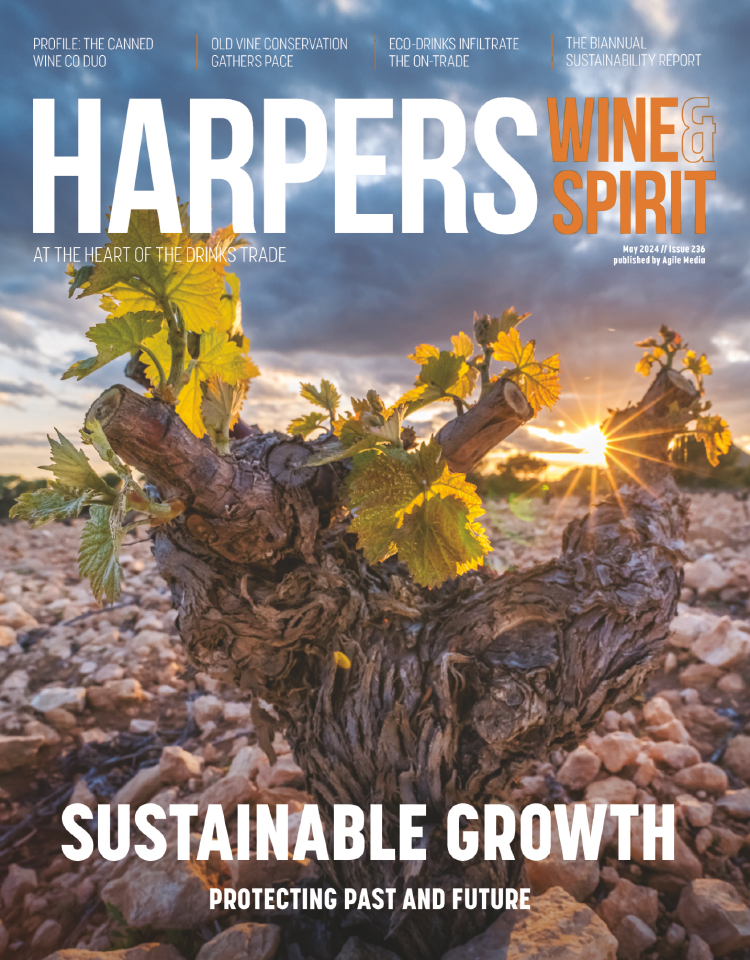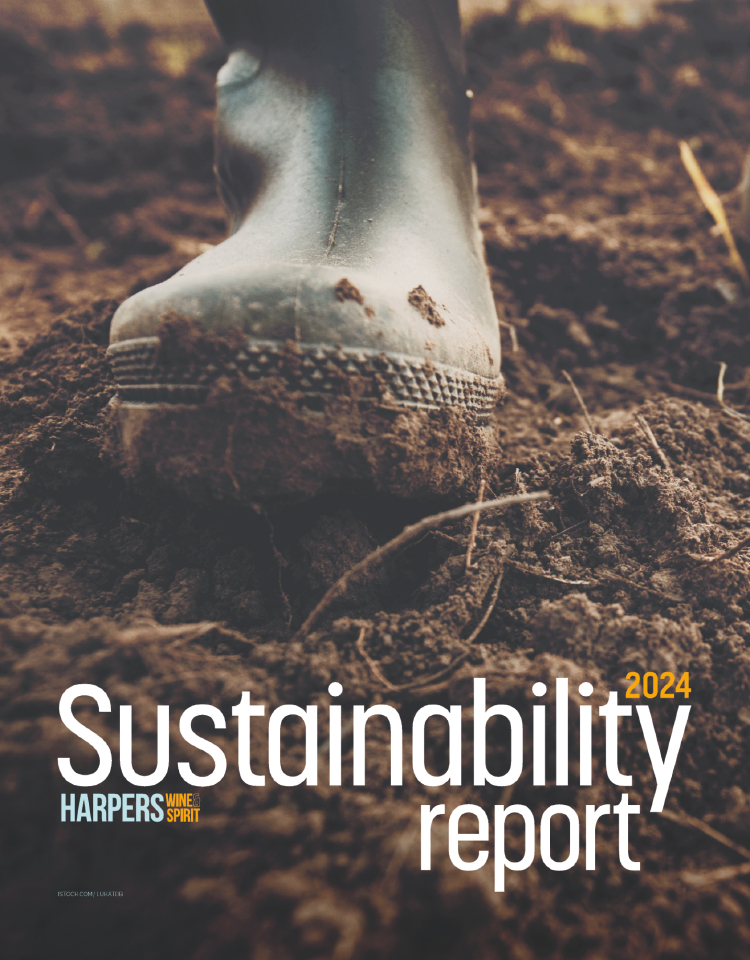
Rise of German cool climate wine leads to UK's first German Pinot Noir tasting
Britain’s first ever German Pinot Noir tasting is to take place in London, in March this year, Harpers can reveal.
German wine distributor, Howard Ripley has teamed up with distributor ABS (Awin Barratt Siegel) to jointly host the tasting.
The two distributors have decided to bring their German Pinot Noir producers together at the event to showcase a broad range of Spätburgunder production.
The launch of the tasting comes amid strong demand for German Pinot Noir, (from entry level to top end), which has evolved into a highly competitive alternative to Burgundy reds.
“With the rise in prices in Burgundy reds in recent years, lower-priced German Pinot Noir has filled the price gap, but now this trend has moved on: there has been an explosion of interest in higher-end German wines including Pinot Noir, which is very gratifying,” said Sebastian Thomas, director and German wine buyer at Howard Ripley.
“The on-trade used to spend no more than £14 on German wine, but customers are now forking out between £20 and £30 on reds and in the future, they will be spending £60 to £70 on German Pinot Noir,” Thomas told Harpers.
Meanwhile, Iris Ellmann, MD at German wine distributor, The Wine Barn, said German cru Pinot Noirs were “more affordable and at least, equal in quality” to their counterparts in Burgundy.
A run of small vintages in Burgundy and increasing prices in the French region have been one of the three key factors driving the surge in interest in German Pinot Noir, according to Kate Dowdeswell, senior national account manager at wine distributor, ABS.
The other two factors were, “Excellent value for money for entry level wine at around the £10 price and outstanding wines at the top end made by world-class producers such as Furst (Franken) and Stodden (AHR),” said Dowdeswell.
“In 2017, ABS saw a huge growth in demand for German Pinot Noir”.
Germany is the world’s third largest producer of Pinot Noir and its reds are known for their low alcohol and purity of fruit.
“The growth of Germany’s biggest red grape variety, has come about due to a combination of clonal selection and global warming (ripeness),” said David Hunter, a German wine expert, consultant and former WSET educator.
Wine merchant Justerini & Brooks said the growth of German cool climate wines had continued across the trade spectrum in 2017, having taken off in 2015.
“Today Germany’s cool climate wines, be they completely dry, off dry, very sweet, or even Pinot Noir, offer a refreshing combination of low alcohol, longevity and flavour intensity - it really is no wonder they are finding such favour with the serious wine drinkers around the world,” said Julian Campbell, German wine buyer at Justerini & Brooks.
“Our German 2015 campaign was the biggest in our company’s history. For a number of years, sales of the traditional core German range of Kabinetts, Spätlesen and Auslesen wines have been bolstered by an increasing interest in both Spätburgunder (Pinot Noir) and Germany’s great trocken, dry wines,” Campbell told Harpers.
“In 2015 wines that had been of interest to a fringe group of committed German wine drinkers were suddenly cropping up in wish-lists of some of the world’s greatest collectors. Within two days of release of the 2015 vintage, we had sold 90% of our available Grosses Gewachs, our Grand Cru dry Rieslings, a phenomenon we’d never seen before,” he explained.
Despite some difficulties surrounding the understanding of German wine labelling, overall, UK distributors of German wines say there is a steady, but growing strength of the category in Britain, which one leading distributor has described as the new ‘golden age’ of German wines.
Germany has not reported poor quality vintage since 1984 and despite a much smaller vintage in the country in 2017, distributors believe growth in the category, overall, will remain steady.
“I think the growth will be steady as winemakers will try to keep prices more or less the same, even though some of them lost between 30-40% of the 2017 harvest,” said Ellmann.
She added: “There was a minute price increase in 2018.”
Dry Rieslings and the Pinot Noir, which are driving the German category have helped fuel, over the past two years, new listings of Pinot Blanc and Pinot Gris in UK supermarkets and independent wine shops; a phenomenon which Wines of Germany calls the rise of the Pinot Trio.
“Weissburgunder (Pinot Blanc) and Grauburgunder (Pinot Gris) are rapidly gaining greater acceptance as buyers appreciate both the quality and price that regions such as the Pfalz and Rheinhessen can offer,” said Dowdeswell.
“The fact that these are always dry makes them less of a minefield for consumers to navigate than the panoply of styles from across the Rhein in Alsace,” she said.
And now the growth of the Germany category has encouraged UK distributors to move further beyond dry Riesling and the Pinot Trio.
Sekt, the German sparkling wine, is starting to make headway in the London on-trade.
Among new additions presented this week at the Wine Barn’s prestigious annual portfolio tasting, was Griesel’s premium bottled low-intervention fermented sparkling wines range made by Nico Brandner, a new-wave sparkling wine producer from the Hessische Bergstasse region.
German publication Meininger Verlag awarded Brandner, who is known for his dry Pinot Noir sparkling wines, Best German Sekt prize in 2017.
“There is been a big surge in Sekt. Last year we sold hundreds of cases of Sekt (traditional method) which has grown on the back of Prosecco,” Howard Ripley’s Sebastian Thomas said.
He added that, in terms of white wines, there had been a resurgence of Silvaner in region of Franken, where a new generation of producers are making Grosses Gewach Silvaner wines.
The German Pinot Noir tasting takes place at Chandos House, in Marylebone, London, on March 26 this year.
Keywords:
- wine
- WSET
- Pinot Noir
- distributor
- tasting
- Burgundy
- noir
- pinot
- reds
- MD
- German Wine
- german
- german pinot
- wine distributor
- burgundy reds
- german pinot noir
- pinot noir tasting
- german wine distributor
- national account manager
- wine distributor abs
- ABS
- AHR





